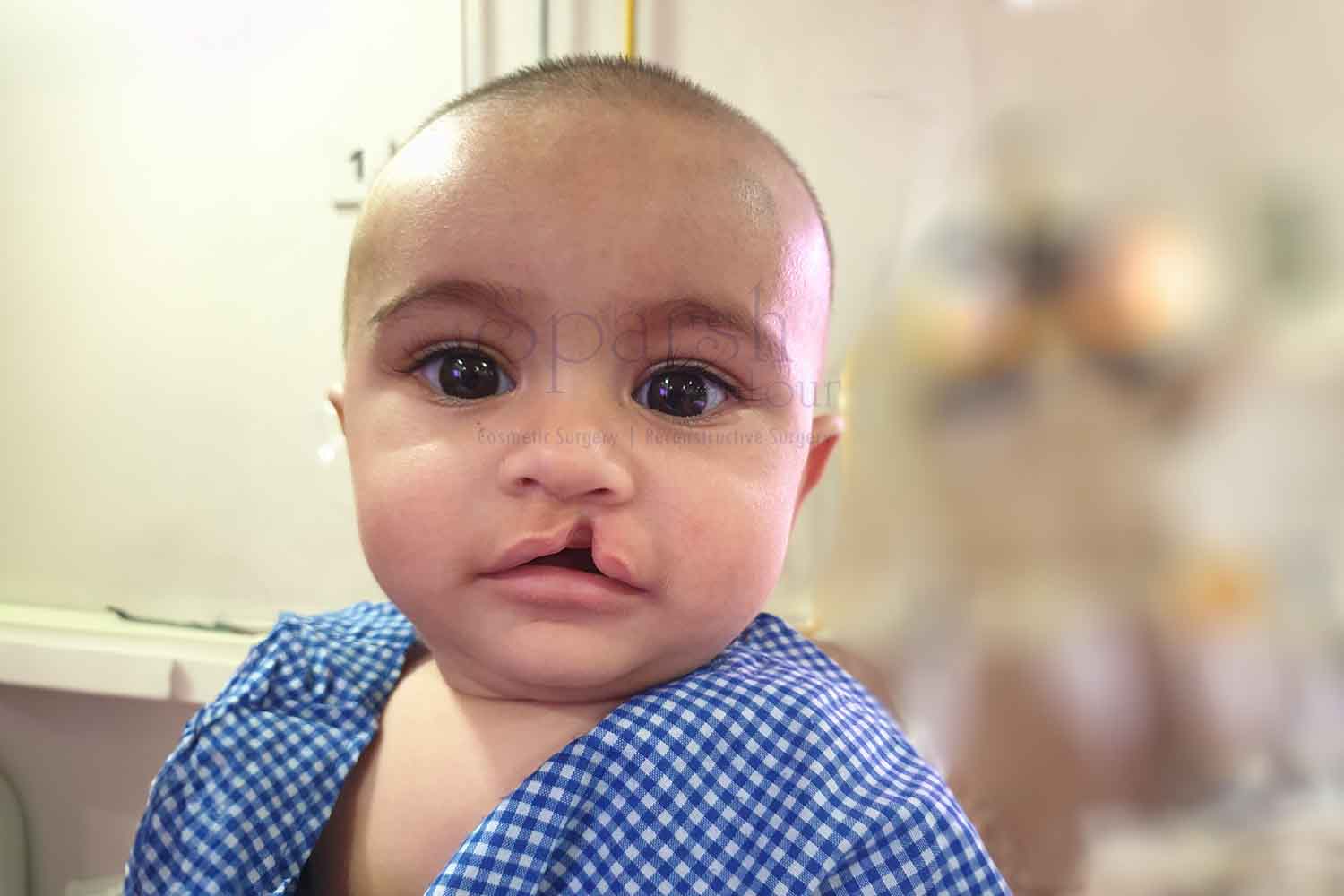Facial Surgeries / Birth Deformity
Cleft Lip and Cleft Palate
Cleft lip and cleft palate are among the most common congenital defects affecting children. These conditions occur due to the incomplete formation of the upper lip (cleft lip) or the roof of the mouth (cleft palate). It occurs when a baby’s lip or mouth does not fully develop during pregnancy. A cleft lip is characterized by an opening or gap in the upper lip, which can range from a small notch to a large split that extends up into the nose. This gap occurs when the tissue that forms the lip fails to come together completely during fetal development. A cleft palate, on the other hand, involves an opening in the roof of the mouth (palate) that can extend into the nasal cavity. This condition occurs when the tissue that forms the roof of the mouth does not fuse properly during pregnancy.
Cleft lip and cleft palate can affect a child’s ability to eat, speak, and breathe, and they may also lead to ear infections and hearing issues. Surgical interventions are typically performed in stages, starting with repairing the cleft lip in infancy and then addressing the cleft palate as the child grows. Early intervention and comprehensive care can significantly improve the child’s functional and aesthetic outcomes, helping them to lead a healthy, fulfilling life.
Cleft lip and cleft palate can affect a child’s ability to eat, speak, and breathe, and they may also lead to ear infections and hearing issues. Surgical interventions are typically performed in stages, starting with repairing the cleft lip in infancy and then addressing the cleft palate as the child grows. Early intervention and comprehensive care can significantly improve the child’s functional and aesthetic outcomes, helping them to lead a healthy, fulfilling life.
 After
After  Before
Before Drag
Facial Surgeries / Birth Deformity
What Treatments is for ?
Services and treatment for children with orofacial clefts can vary depending on:
- The severity of the cleft
- The child's age and needs
- The presence of associated syndromes or other birth defects
Surgery to repair a cleft lip usually occurs in the first few months of life. It is recommended within the first 12 months of life. Surgery to repair a cleft palate is recommended within the first 18 months of life, or earlier if possible. Many children will need additional surgical procedures as they get older.
our expert answers
frequently asked questions
How are cleft lip and cleft palate diagnosed?
These conditions are typically diagnosed through prenatal ultrasounds, physical examination at birth, and sometimes genetic testing.
What are the treatment options for cleft lip and cleft palate?
Treatment usually involves a series of surgeries to repair the lip and palate. Additional treatments may include speech therapy, orthodontic care, and hearing assessments to address any related issues.
When is surgery for cleft lip and cleft palate typically performed?
Surgery for cleft lip is often performed between 2 to 3 months of age, while cleft palate repair is usually done between 9 to 18 months of age. Timing can vary based on the child’s specific needs and overall health.
What are the potential challenges associated with cleft lip and cleft palate?
Children with cleft lip and cleft palate may experience difficulties with feeding, speech development, hearing, and dental health. Early and comprehensive treatment can help manage these challenges effectively.
Is ongoing care required after surgery?
Yes, ongoing care is often needed to monitor the child's development and address any speech, dental, or hearing issues that may arise. Regular follow-ups with a multidisciplinary team are essential for optimal outcomes.
APPOINTMENT
